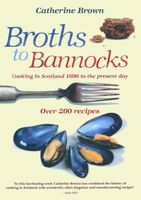Advertisement
Puddings in the Pot
Published 1990
These early puddings cooked in stomach bags were first cousins to the haggis which was, until the late eighteenth century, a universal British dish. Etymologists differ on the derivation but Gillian Edwards in Hogmanay and Tiffany (1970) claims that: ‘Some derive this word from the French hachis, which developed through the spellings hache and hachy into English hash, but except that haggis in Cumberland was called hash pudding, there seems no definite connexion. Another suggestion derives it from an old verb hag, to cut or chop, or the Anglo-Saxon haecan, to hack into pieces. Or again it may be related to the ancient name for a magpie, haggess.’ Which, as she suggests, makes the connexion between the nature of the dish, as an accumulation of odds and ends, and the habits of the bird.

